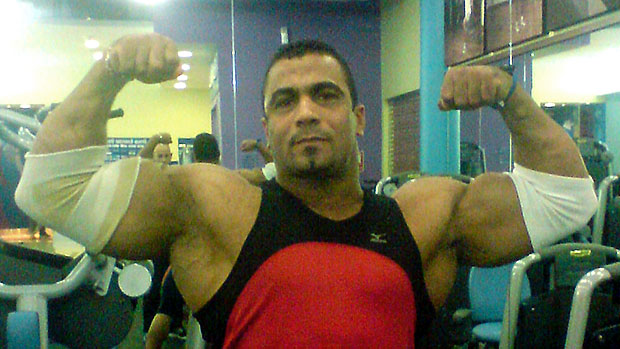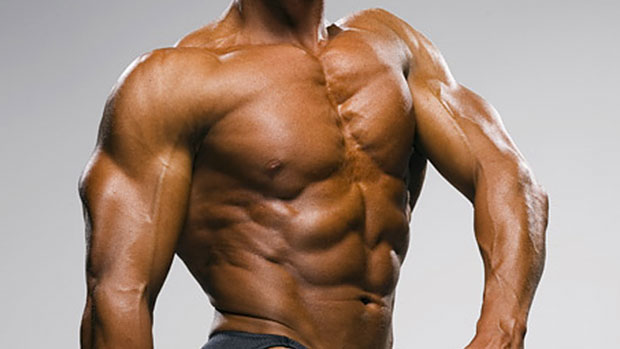On some levels, it somehow seems a shame to reignite the flame of scandal so soon after the Olympic flame has been extinguished. Of course, it's not our nature to bury our heads in the sand, and the only way that the integrity of the Olympics can be regained is to expose its weaknesses, to shine a bright, cleansing light on the crud that grows on its belly.
Hence this report on Olympic drug scandal, Olympic politics, and Olympic pettiness written by perhaps the world's greatest track coach, Charlie Francis.
Read it and you'll have enough dish to be the hit of any locker room conversation.
Pulled hamstrings, falls, viruses, upsets, surprise non-qualifiers, pre-game departures amidst claims of death threats, allegations and accusations!
What in the wide world of sports was going on in Sydney?
The drug story took center stage early in the games with the revelation that CJ Hunter, the current World Champion in the Shot Put and husband of sprint phenom Marion Jones, had previously failed four separate drug tests for the anabolic steroid nandrolone in various European competitions prior to the Olympics.
The press had been following up rumors to this effect for weeks prior to the games, but had been met with denials all around. "There are no positive tests being processed," announced the U.S.A.T.F., America's track governing body in response to reporter queries. "Bullshit," said Hunter/Jones agent Charlie Wells in response.
The aforementioned stuff hit the fan shortly afterward when the International Amateur Athletics Federation's (IAAF) Chief Doping Officer, Arne Ljungqvist, made CJ's positive tests official. The USATF, who had said no positive tests were being processed, was caught in a blatant lie and scrambled for cover behind Clintonesque legalisms. They pointed to a definition of "positive" [drug tests] that was more narrow than the President's definition of "sex."
The IAAF then added fuel to the fire of scandal by announcing that there were 15 more American positives that the USATF had covered up. (Actually, the press has been following up on eight cases for the year 2000, 17 for the year 1999, and more from 98, 97, and 96.)
A press conference was hastily arranged by the Hunter/Jones camp to try to limit the damages and allow Marion to go on with her quest for gold in peace. Enter Johnny Cochran of OJ Simpson fame. Cochran had previously represented Jones (successfully) in 1992 during a random drug testing controversy.
CJ Hunter then issued a tearful pro-forma denial. He had reason to be tearful, for while the test results were no surprise, their release to the public outside the USATF's control certainly was. He would ordinarily have expected the positive tests to go away as he would have known that USATF doping panels have been routinely dismissing nandrolone and Testosterone positives out of hand, claiming them to be scientifically insupportable.
Without the list of names, the IAAF would have been powerless to overturn an USATF decision, even though they routinely did it elsewhere.
The press conference achieved one of its two objectives by isolating Marion from the damage, but failed on the other. Hunter was vilified and ridiculed, "How Could He Do This To Her?" cried one American paper. "Beauty and the Beast" cried another. His "iron supplement defense" was laughed at, although not with the side-splitting hilarity that greeted American sprinter Dennis Mitchell's "sex and beer defense."
Hunter was condemned in the court of public opinion and branded a cheat without a hearing. In true Johnny Cochran style, the press conference ended with CJ saying: "I don't know what happened, but I'm going to find out." An investigation by Hunter and his associates as to how the USATF veil of secrecy was lifted will reveal something other than a triumph of investigative journalism. After all, the press had been following up on numerous cases, including a positive test for Testosterone on one prominent female competitor. Why then was Hunter exposed and no one else?
The answer, as usual in this sport, lies deeper and is more unpleasant and centers on a clandestine phone campaign launched by a member of a rival thrower's entourage. This same person also had a much earlier relationship with Marion Jones and the failure to profit from her current success may have been further motivation.
Additionally, US Drug Czar Barry McCaffrey's earlier attacks on the IAAF's doping control program made the organization anxious to retaliate when an opportunity arose. Perhaps it's not coincidental that Britain, the IAAF's most vocal critic, had its track team decimated by a series of leaked positive drug test results against its top athletes.
IAAF minions began leaking confidential lab results on Hunter to the media and when reaction to the news seemed favorable, ever-cautious Arne Ljungqvist waded in.
The soap opera continued with the United States Olympic Committee, anxious to distance itself from the USATF, sent out Anita de Franz to criticize the USATF's "lack of transparency" in its testing process.
The International Olympic Committee (IOC), ever vindictive, and recently stung by having it's leader Juan Antonio Samaranch dragged in front of the US Congress over the Salt Lake City Olympic bribery scandal, decided that this was the perfect time to stick in the knife by introducing the whiff of additional scandal.
Prince Alexandre de Merode, the head of the IOC medical commission, announced that five Americans "who may have been gold medalists" in the 1988 Seoul Olympic had failed drug tests at the 1988 US Olympic trials and that US authorities had covered them up.
One IOC member, a former medalist in the Winter Olympics, said "There appears to be one rule for the Americans and another for everyone else."
An International media drug frenzy ensued (though NBC remained silent on everything but Hunter) where drug allegations past and present were addressed. During an interview conducted from a beach in Malta, Ben Johnson, who had had his gold medal stripped in those same 1988 Olympics, demanded that the IOC make amends. "Give me my gold medal back!" he shouted.
Back in Australia, the Aussies took offense at the allegation that drugs had been involved in the swimming events of the 2000 Olympics. "Ridiculous!" screamed the headline in an Australian Tabloid referring to doping at the pool.
American women swimming joined the fray with a venomous attack on their multi-gold medalist rival from Holland. Hey! Why not? It worked with Michelle Smith, didn't it? Their attack was short-circuited when a US Swim coach admitted that the top American women hadn't been random tested in two years, and as such, had no right to their indignation.
Events were now getting out of hand and concern must have been replacing revenge as a motivator at the IOC. After all, it didn't take a genius to figure out that the story of the 1988 positives would inevitably lead to such questions as, "What did you know and when did you know it? Didn't this testing outrage bother you during the 12 years before congressional hearings? How did these same Americans pass the test in Seoul – or did they? (The additional unnamed positives from the 1984, 1988, and 1996 Olympics would fuel speculation.)
How would NBC, the NBA, and the NHL – where some of these athletes now play – react to such a severe blow to their respective products? With so much at stake, could they even permit the possibility that it would come to light?
The IOC sources began to backpedal. The story being circulated to the media that 3 of the Americans who tested positive in 1988 in Seoul accounted for 5 gold medals was adjusted downward to become 2 athletes who had won 3 gold medals.
Perhaps one of the Olympic champions was too important to the Olympic movement to be sacrificed with the others. (The original story, complete with all the names, was submitted to one of America's foremost newspapers in 1989 and even cited sources from the lab, but was killed by the editorial board.)
Dick Pound, the Executive Vice President of the IOC shifted the focus back to the safer ground of the unfortunate CJ Hunter. Pound ridiculed his iron supplement defense saying, "He'd be a rusty man by now," and Hunter's coaching credentials were revoked. This was an about-face for the IOC, which had long maintained that doping infractions outside the Olympics were not their problem. Hunter's positives occurred in IAAF competitions and he wasn't even entered in the Olympic games.
In the Byzantine world of the IOC, there's always an angle. By hammering Hunter – someone who'd already been named – they appeared to be tough on the USA, without the unpleasantness that would surely follow if an American athlete tested positive in the games themselves.
Anyway, as the dust settled, the IOC returned to what it does best – rounding up a few positives and defending the sanctity of the Olympic ethos from the threat posed by an 16-year-old, 80-pound Romanian Gymnast.
Though the rapidly proliferating drug scene has punted performance standards clear out of sight; the IOC will put a positive spin on positive tests to convince you that they're winning the war against drugs in sport. Don't believe it!
If drug testing were truly effective, you would have seen between 2,300 and 6,100 positive tests in Sydney.
How can I make such a statement? Let's do the math. The Olympics had approximately 11,000 competitors, with about seventy percent or 7,700 competitors in sports influenced by power and endurance related drugs.
At the Dubin Inquiry, I testified that the general consensus was that 80 percent of the track and field athletes used drugs at the Olympic level. This was disputed by John Holt, the General Secretary of the IAAF who claimed that only 30 to 40 percent used drugs. A similar range of figures can be expected over the other afflicted sports.
Using Holt's figures, that means there were between 2,300 and 6,100 drug users in the games.
It makes singling out CJ Hunter all the more preposterous.




